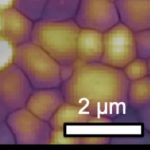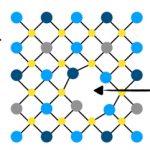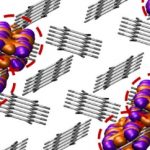Tandem solar lays new perovskite cells over standard silicon cells. Perovskite absorbs the shorter wavelengths of light that silicon misses. So the thin layer of perovskite collects the visible wavelengths, and lets the near-infrared light through to the silicon underneath. Martina Grünwald and Sarah Michaud writing for the WEF point at the results of R&D and demonstrations in Germany, Switzerland, Saudi Arabia and China. Energy conversion … [Read more...]
Four net-zero opportunities for 2024: wind, solar, lab-grown meat, positive tipping points
Will de Freitas at The Conversation draws attention to four reasons to celebrate 2023 and their implications for our drive to tackle climate change. Most will be familiar with the continued progress made with wind and solar, though they deserve repeating given its immense significance. Wind turbines now stand more than a quarter of a kilometre high, and will get taller. At that size, one turn of the blade will power an average home in the … [Read more...]
Perovskite: abundant, cheap, printable solar cells demonstrated, ready to generate power
Laboratories around the world are racing to make printable perovskite solar cells, produced in abundance and so thin they can be wrapped around almost anything. It’s a huge advantage over the typical silicon cell that is relatively big and fragile. And perovskite is much less expensive to produce. David Beynon at Swansea University describes research there that has demonstrated how a roll of plastic film can be loaded into a printing press to … [Read more...]
Critical Minerals: will there be enough to meet the 2050 net-zero emissions target?
If the production and processing of critical minerals cannot keep up with the accelerating adoption of batteries, EVs, wind turbines and solar PV technologies, the pace and success of the global energy system transformation will be put at risk. In this explainer, Lilly Yejin Lee and James Glynn at the Center on Global Energy Policy, Columbia University address the big questions, drawing on the data underlying the IEA’s “The Role of Critical … [Read more...]
Comparing the efficiency and progress of the 5 leading Solar PV cell technologies
NREL’s “Best Research-Cell Efficiency Chart” allows researchers to easily compare the performance of specific PV technologies, stretching back 50 years. It’s regularly updated and is free to use, explains Wayne Hicks and Harrison Dreves at NREL. A new “interactive” version is now available. The focus is on crystalline silicon cells, single-junction gallium arsenide cells, multijunction cells, thin films, and emerging PV. For example, you can … [Read more...]
Perovskites: the next generation of solar cells and lighting?
Enthusiasm about the discoveries being made about perovskite materials is spreading, explains Sam Stranks at the University of Cambridge. Perovskite solar cells hit 25.2% efficiency in 2019, not far off crystalline silicon cells at 26.7%. Research is suggesting that figure could rise higher still. Perovskite can be “tuned” to absorb particular frequencies of light, allowing different layers of perovskites to absorb different and therefore more … [Read more...]
The search for “thin film” solar PV: stable, efficient, non-toxic, abundant
Around 95% of the world’s solar modules are made with silicon. It’s stable against temperature and humidity fluctuations and we’ll never run out of it. But it’s quite inefficient at absorbing sunlight, and very brittle. So the silicon layers in PV have to be quite thick to capture sunlight and resist cracking, leading to heavy and bulky solar panels. The remaining 5% of solar modules are “thin film”, opening the way for game-changing lightweight … [Read more...]
New solar cell allows a photon to release two electrons, not just one
In conventional silicon-based solar cells, each photon of light can only knock loose a single electron, creating electricity. That’s even if the photon carries more than enough energy to do so. One hammer, one nail. Now, for the first time researchers at MIT and Princeton University in the U.S. have got high-energy photons to strike silicon and kick out two electrons instead of one, opening the door for a new kind of solar cell with greater … [Read more...]









